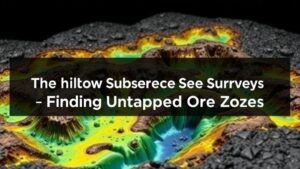Techniques for Tracing Ore Veins from Surface Float Rock
Techniques for Tracing Ore Veins from Surface Float Rock
Identifying and tracing ore veins from surface float rock is a critical step in mineral exploration. This process not only aids geologists and prospectors in finding lucrative mineral deposits but also enhances the understanding of geological formations. This article outlines various techniques and methodologies used to trace ore veins effectively.
Understanding Surface Float Rock
Surface float rock refers to the fragments of rock that are found on the surface and have been transported from their original source. e pieces can provide significant clues about the underlying geology and the presence of ore bodies. The compositional analysis and spatial distribution of these float rocks can lead to the identification of ore veins below.
Techniques for Tracing Ore Veins
The following techniques are commonly employed in the exploration of ore veins from surface float rock:
- Geological Mapping: Detailed geological maps that illustrate the distribution of float rocks help in visualizing the spatial relationship between mineralized zones and surface features. This technique involves collecting data on rock types, structures, and the orientation of veins.
- Geochemical Sampling: This involves collecting samples of surface float rock and analyzing them for trace elements to detect anomalies that may indicate the presence of nearby ore deposits. Techniques such as X-ray fluorescence (XRF) can provide immediate results regarding the composition of the samples.
- Geophysical Surveys: Various geophysical methods, including resistivity, magnetic, and electromagnetic surveys, can be employed to detect subsurface anomalies related to ore mineralization. For example, a magnetic survey may reveal features linked to iron ore deposits.
- Remote Sensing: Technologies such as satellite imaging and aerial photography enable geologists to identify surface features and mineral anomalies from a distance. This non-invasive technique can highlight areas of interest for further ground investigation.
Case Study: Porphyry Copper Deposits
A notable example of tracing ore veins via surface float rock can be observed in the exploration of porphyry copper deposits in Chile. Geologists successfully traced surface float rock that had copper mineralization. The subsequent geochemical analysis revealed elevated copper levels, prompting further investigation that led to the discovery of substantial copper veins underground. This case emphasizes how combining geological assessment with geochemical techniques can yield valuable results.
Challenges in Identification
Several challenges may hinder the effective tracing of ore veins from surface float rock:
- Uncertainties in Transport: Float rocks may have been moved considerable distances by natural processes, complicating the interpretation of their provenance.
- Local Geological Variability: The presence of multiple geological formations can obscure the true nature of mineralization, making it difficult to pinpoint ore veins.
- Weathering and Alteration: Surface weathering can alter the chemical and physical properties of float rocks, masking the presence of metal deposits.
Real-World Applications
In practical applications, the techniques discussed can be seen in the work of mining exploration companies, which engage in extensive field campaigns. For example, companies such as Barrick Gold employ these methodologies in areas with known mineralization potential, thus effectively narrowing down targets for further drilling.
Actionable Takeaways
For geologists and prospectors aiming to enhance their exploration strategies, consider the following action items:
- Integrate comprehensive geological mapping with advanced geochemical sampling techniques to increase the likelihood of identifying ore veins.
- Leverage modern geophysical survey methods to complement surface investigations.
- Stay updated on remote sensing technologies that can provide large-scale insights into mineral potential.
- Document and analyze the relationship between surface float rock composition and known mineral deposits for better predictive modeling in future explorations.
By systematically applying these techniques, mineral explorers can effectively trace ore veins from surface float rock, ultimately leading to more successful exploration endeavors.


